How a rejected Thanksgiving speech forged an Indigenous holiday tradition
Indigenous leader Mahtowin Monro speaks about how the National Day of Mourning offers a corrective to settler myths in the US.
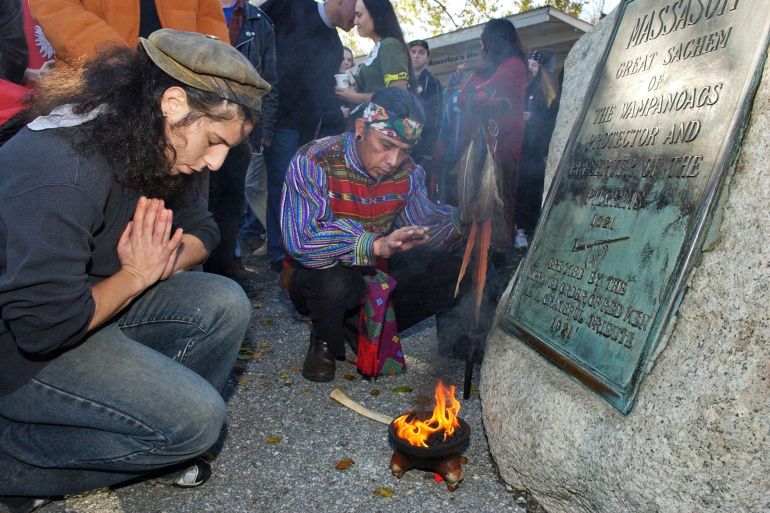
When Mahtowin Monro thinks back to the Thanksgivings of her childhood, she remembers the pageants.
It was an elementary school tradition to divide the class in two, with some children dressed as Pilgrims — in bonnets and tall hats — and others assigned to represent Indigenous peoples, with paper feathers and headbands.
Keep reading
list of 3 itemsIndigenous groups say they are left out of US immigration debate
Q&A: Why US advocates want more power to probe Indigenous boarding schools
Together, they were meant to act out the holiday myth: that early settlers in the United States embraced their newfound Indigenous neighbours with open arms and a hearty feast.
But even as a child, Monro could sense that depiction was wrong. Now, she helps lead a ceremony meant to honour the real history of Indigenous peoples in North America — a history she believes Thanksgiving plays a part in erasing.
On the fourth Thursday of November, timed to the US Thanksgiving holiday, she and other members of the group United American Indians of New England (UAINE) gather in Plymouth, Massachusetts, to hold a National Day of Mourning.
The event is part protest, part remembrance, part spiritual ceremony. It not only acknowledges the ongoing violence against Indigenous people but also brings together speakers on a range of issues, from environmental destruction to fishing rights.
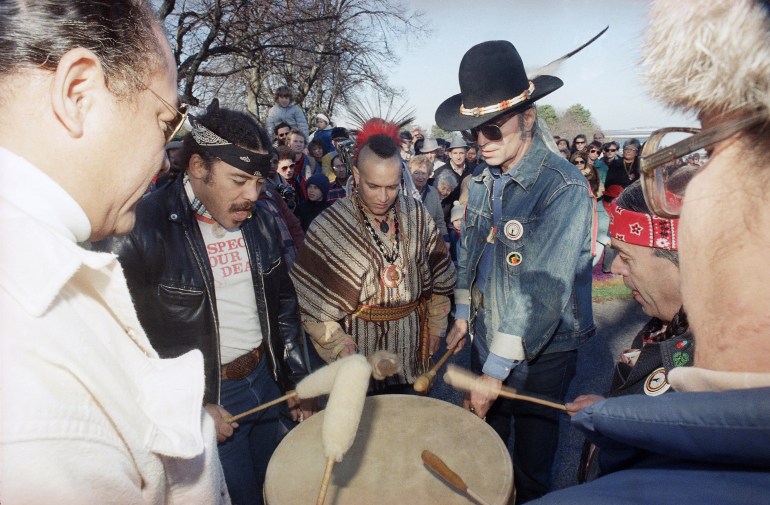
Monro, who identifies as Oglala Sioux, attended her first National Day of Mourning in the mid-1980s and said she was instantly hooked.
“It was, to me, so amazing,” Monro said. “I really liked the idea that there were Native people in New England — some of whom had been told growing up that they were extinct — that were there speaking about their history and what was going on with them now.”
It was at the ceremony that she met the late Indigenous leader Wamsutta Frank James, who would eventually be the grandfather to her twin children.
An Aquinnah Wampanoag man, James was among the founders of the National Day of Mourning in 1970.
At the time, he had been invited to speak at the 350th anniversary of the Pilgrims’ arrival to Plymouth — but event organisers revoked the offer after screening his remarks, which referenced the atrocities committed against Indigenous peoples.
“Our lands have fallen into the hands of the aggressor. We have allowed the white man to keep us on our knees,” Frank wrote in his suppressed speech.
“What has happened cannot be changed, but today we must work towards a more humane America, a more Indian America, where men and nature once again are important.”
Rejected from the anniversary event, Frank instead organised a protest on Cole’s Hill, overlooking Plymouth Bay — a tradition Monro and her daughter Kisha James carry on to this day.
Monro spoke to Al Jazeera about her memories of Frank and why reimagining holidays can be a tool for empowerment.
This interview has been edited for length and clarity.
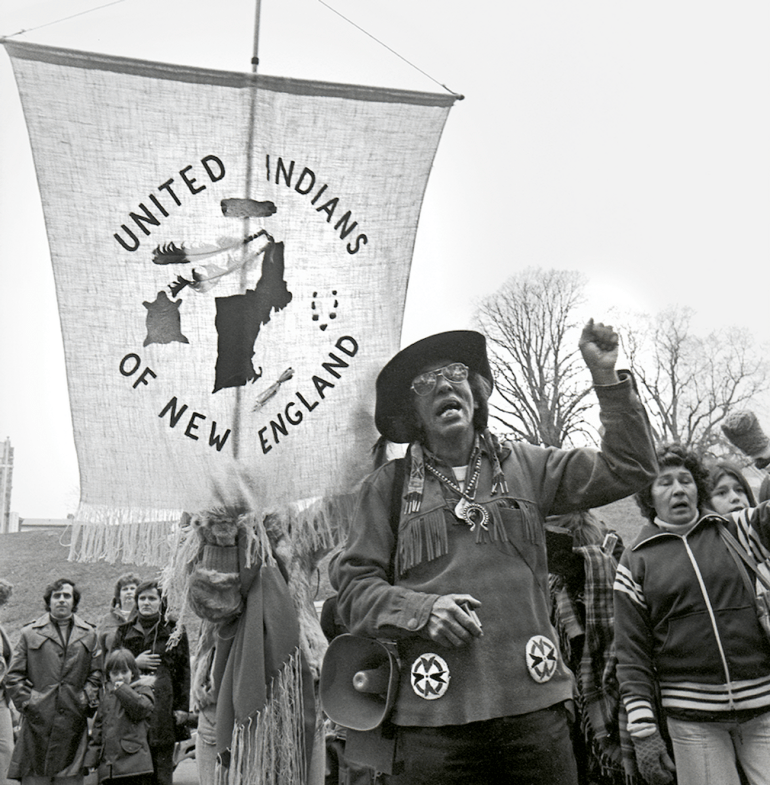
Al Jazeera: Why do you think that they approached Wamsutta to speak? And what were they expecting him to say?
Mahtowin Monro: Well, he was very well known in the area as the head of the Federated Eastern Indian League. He was quite prominent. And I think there was this idea that he was going to come and praise the Pilgrims.
They thought that he would come and say, “Oh, we’re so grateful that the Pilgrims came, and we all got along, and everything has been great.”
He wrote his speech along with his wife. I want to give her credit. It wasn’t just him. But he very carefully used Pilgrim sources such as Mourt’s Relation and other things they had written. He certainly couldn’t go and praise the Pilgrims, but he also felt it was important to tell the truth about what had happened.
Thanksgiving was not a happy time for him or other Wampanoag people because it represents a celebration of the invasion and all the devastation that would follow for Indigenous people in the region. So he was very clear about that.
By today’s standards, his suppressed speech is actually pretty tame. People now would say things even more forcefully, but the state wanted to see his remarks in advance. And when he sent them, they said, “Oh no, you can’t go and give that.”
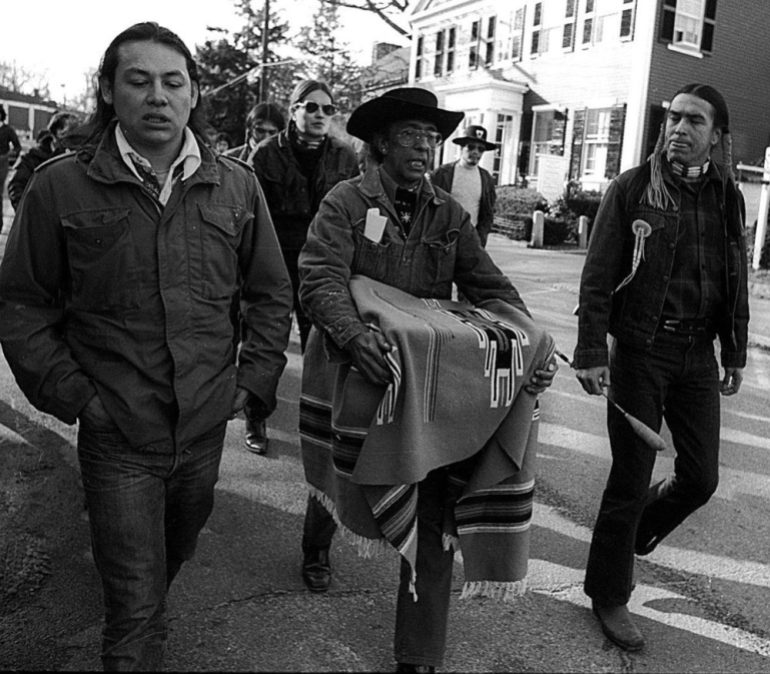
Al Jazeera: How do you think that the rejection of the speech shaped him as a person and as a leader?
Monro: Certainly he was not going to go give a speech that would be palatable to these state officials. He was not going to give a speech in praise of the Pilgrims and all the good that they had supposedly done for Indigenous peoples, when that was completely counter to any historical reality.
He had been somebody whose family had suffered a lot of discrimination. I’ll give you an example. He was, we believe, the first Native man to graduate from the New England Conservatory of Music. He was an incredibly talented musician, a trumpet player.
When he got to the end of his courses at the New England Conservatory, he was told by his primary teacher, who cared about him very much: “You’re the best trumpet player in this class, but no symphony orchestra in the country will hire you because of the colour of your skin.”
And that was true because he was dark-skinned. At the time, all the orchestras in the country were all white, right? So, given all his talent, he couldn’t get a job.
He experienced tremendous discrimination in his life, as did his family. All his siblings, all of them would talk about how they had to run faster and study harder and do everything better to try to overcome all the prejudice that they dealt with.
I think that’s why he felt strongly — well before 1970 — that it was important for Indigenous people in the region to be united and to work together to assert themselves as Indigenous people and to demand respect from the white people.
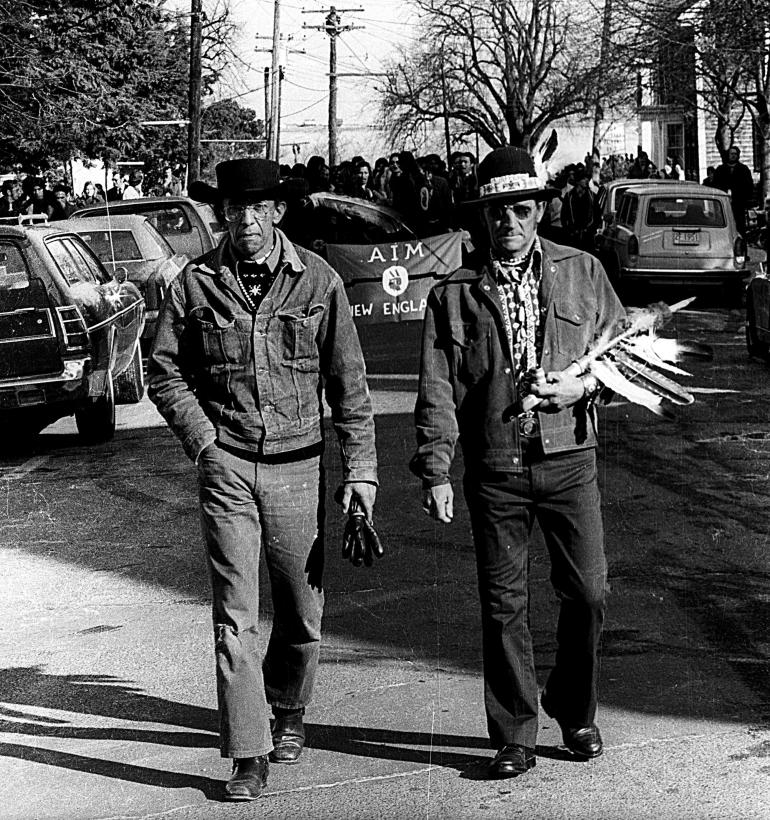
Al Jazeera: You and your daughter Kisha are very much keeping his legacy alive and keeping this ceremony alive. How did he inspire you? How did he shape your work today?
Monro: I learned everything about the Day of Mourning from him — how to do things and what the traditions were, that sort of thing. I spent many hours talking to him about that, to understand them more fully.
I didn’t at the time know that I would end up being a leader in the organization, but certainly it led to that. And he was very supportive. He also felt that it would be important to have more women out front. To be honest, although women had always done a lot of the work, they weren’t necessarily out front as speakers or leaders within the organization.
What I learned from him is to just keep doing this, because it’s really important to do this kind of educational work and speak truth to power and tell the truth about our history.
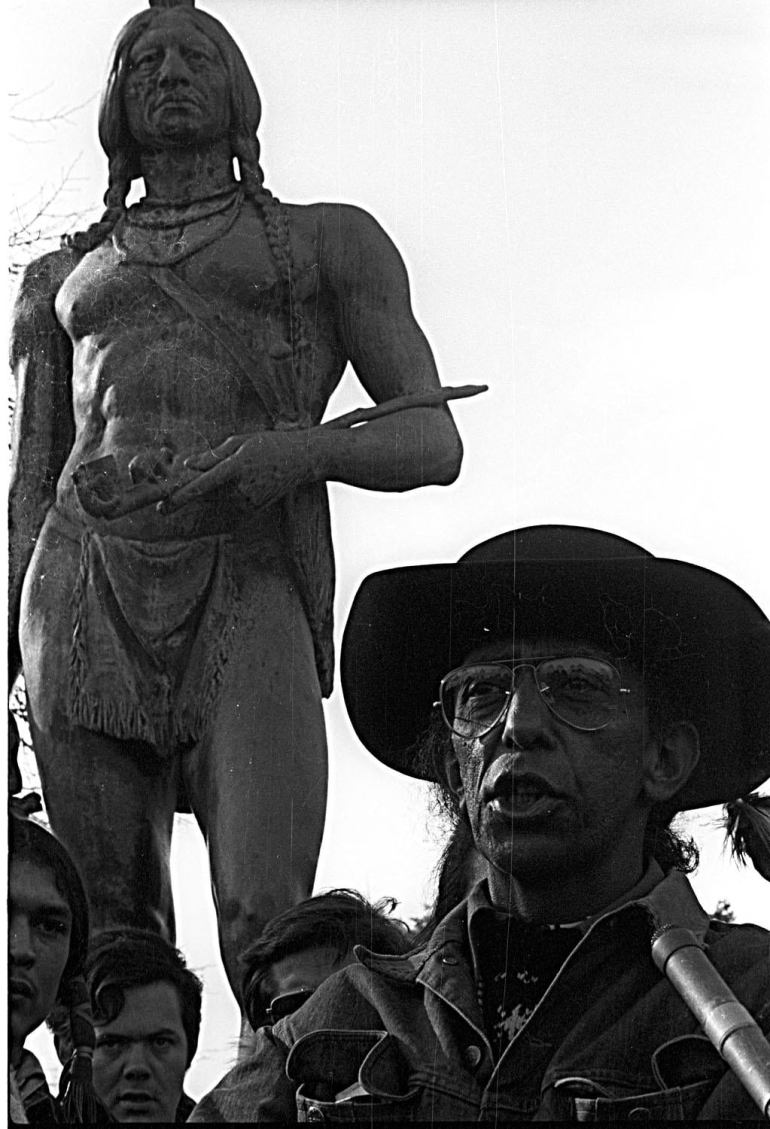
Al Jazeera: There’s this larger push to question holidays like Thanksgiving and Columbus Day and, in some cases, reimagine those holidays entirely. Why is it important to interrogate holidays and question the history that they celebrate?
Monro: Our organization obviously does more in the year than just organising the National Day of Mourning. One of the things that we do is we do work on Indigenous Peoples’ Day campaigns — that is, campaigns to abolish Columbus Day and celebrate Indigenous Peoples’ Day instead.
We’ve been doing that for several years now. In Massachusetts, for instance, we have managed to get resolutions passed in at least 30 towns. But we’re also trying to get it passed on a statewide basis.
The celebration of [European explorer Christopher] Columbus is really harmful. It gives us the idea that Native people were these passive people, just waiting for Columbus to arrive — just waiting to be discovered — when, in fact, they had many, many different cultures and were perfectly successful on their own.
But it continues to be presented that Columbus and all the Europeans who came somehow brought civilisation to us. All of this is really damaging. It is damaging if you’re a kid and you’re Native. You know, Columbus was a genocidal maniac. We don’t hide that from our kids.
It is damaging not just to our kids but any kid to learn nonsense like that. It’s the worst kind of settler colonial nonsense. It erases us and presents their version of history as the only true history. So these things are really embedded throughout American culture, and it’s really important to resist that and to call it out.
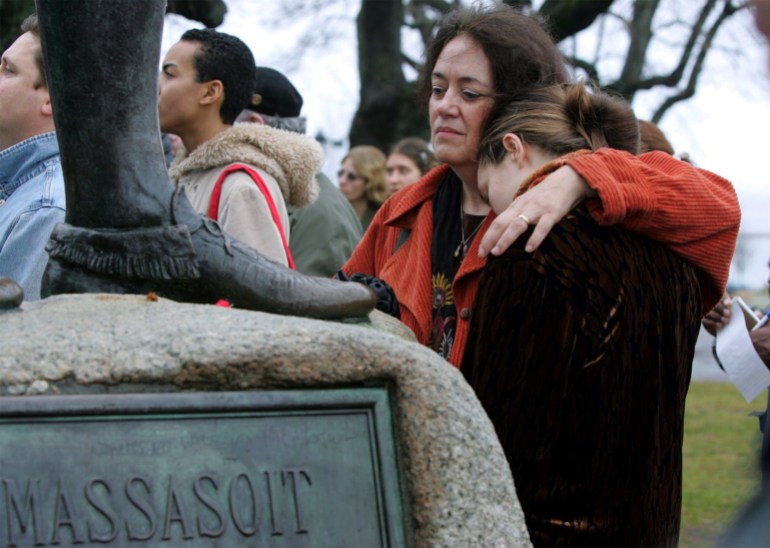
Al Jazeera: Have you ever heard any pushback about the National Day of Mourning? And how do you address misconceptions or concerns that you hear?
Monro: Well, we address them individually, or sometimes we don’t address them at all.
There are people who absolutely resist any truth-telling. They don’t want to hear about the genocide of Indigenous people. They want to have this very pretty George-Washington-and-cherry-pie kind of history that doesn’t tell the truth.
So we’re not going to change their minds and really don’t waste our time fighting with them. But there are a lot of other people: settlers who’ve grown up with all this mythology, with all this nonsense. When they start to find out the truth, they’re actually pretty mad that they were lied to for so long.
So I think it’s really important for non-Native people to experience being with Native people and listening to us and getting a better understanding. They don’t understand whose land they are on. And believe me, we make that clear.